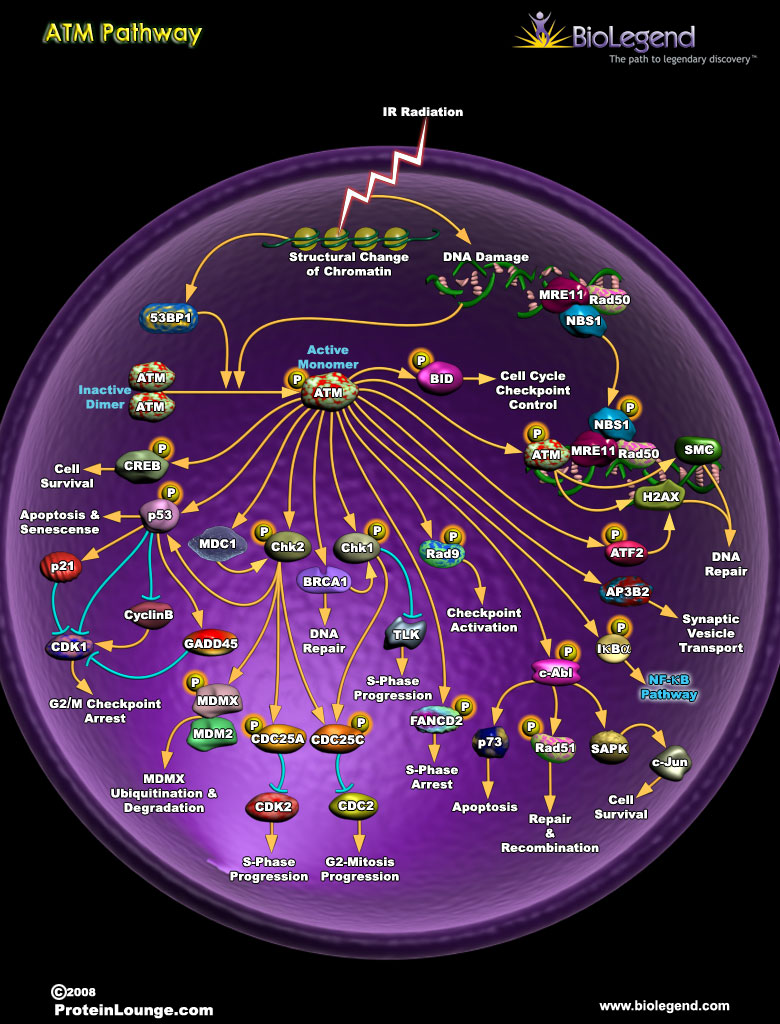ATM Pathway
The ataxia-telangiectasia mutated (ATM) kinase plays a critical role in the DNA damage response (DDR) as a sensor and signal transducer. Upon detection of DNA damage, inactive dimers of ATM are phosphorylated to form active monomers, which go on to phosphorylate numerous other signaling proteins. ATM substrates include the following and many more: p53 which initiates pathways for apoptosis and/or blocking of CDK1 from driving the cell cycle past the G2/M checkpoint; Chk1 and Chk2 which transduce signals to block cell cycle progression; BRCA1 which is involved in DNA damage repair; and AP3B2 which is involved in the formation of clathrin-coated vesicles in neurons.
Click on the poster below to view the interactive version.
 Login / Register
Login / Register 








Follow Us